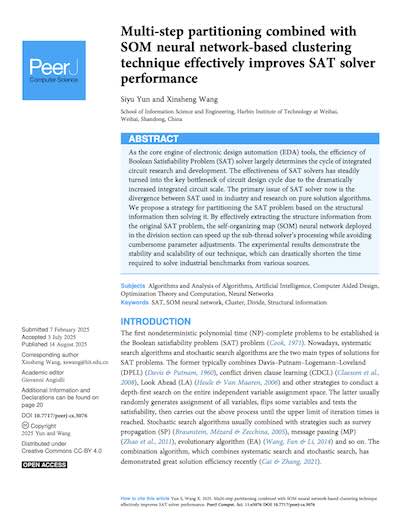Today's article comes from the PeerJ journal of Computer Science. The authors are Yun et al., from the Harbin Institute of Technology, in China. In this paper they showcase a new strategy for solving real-world SAT problems at scale.


You must be an active Journal Club member to access this content. If you're already a member, click the blue button to login. If you're not a member yet, click the sign-up button to get started.
Login to My Account
Sign Up